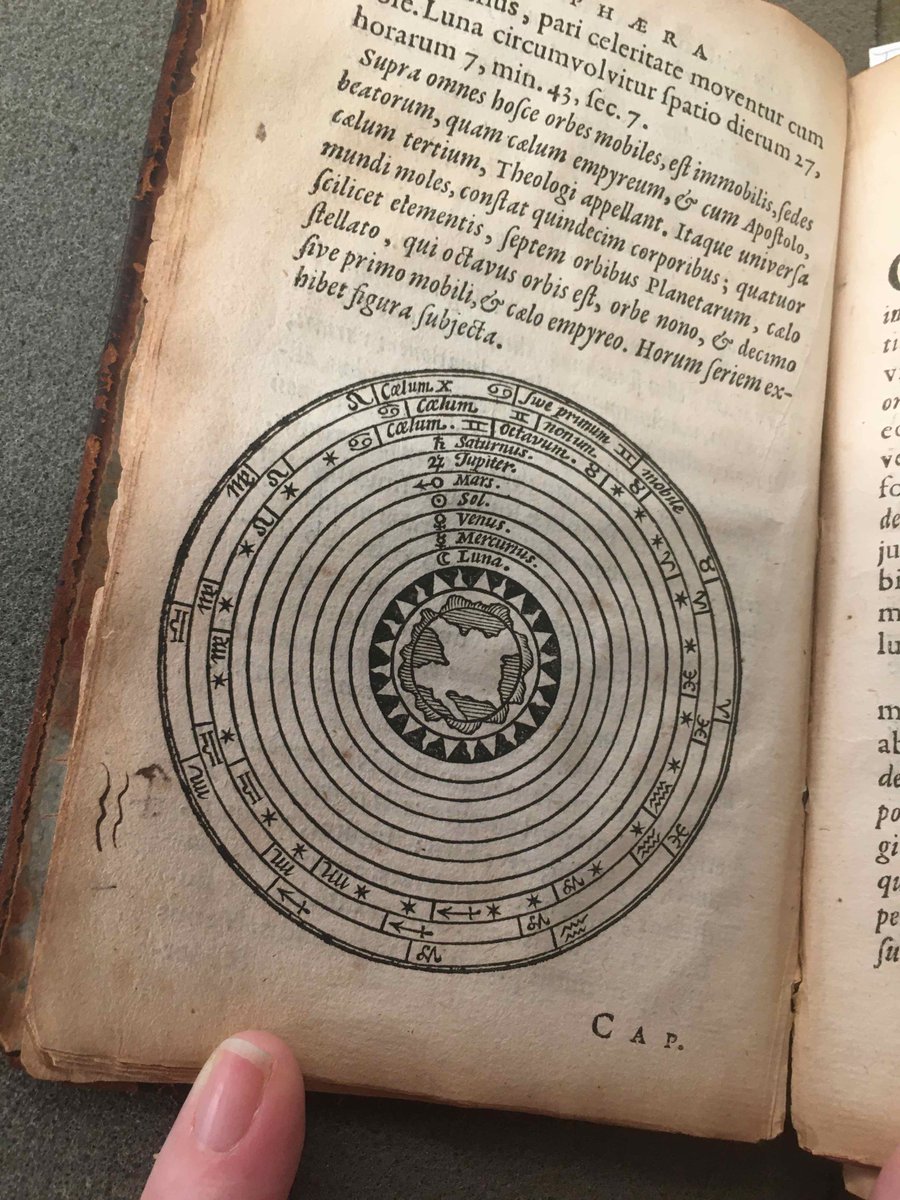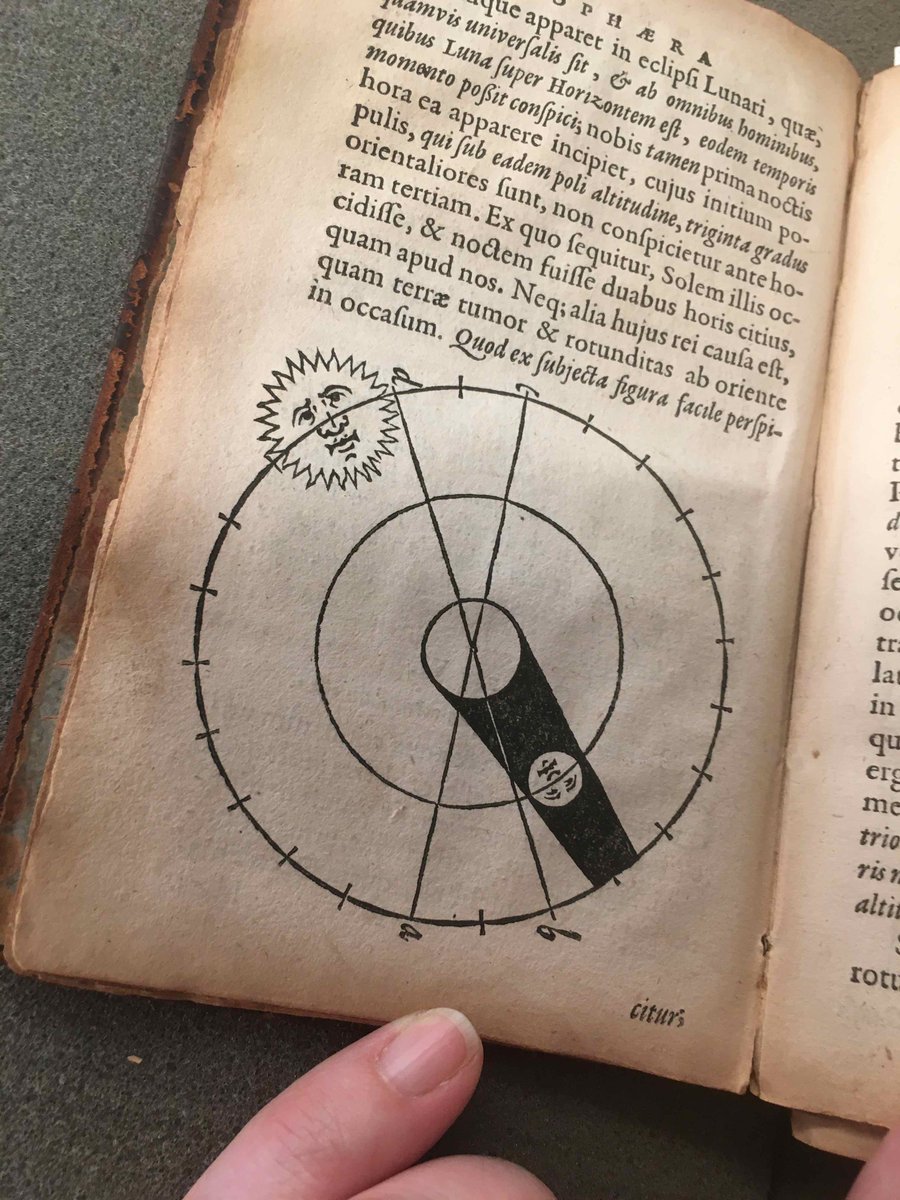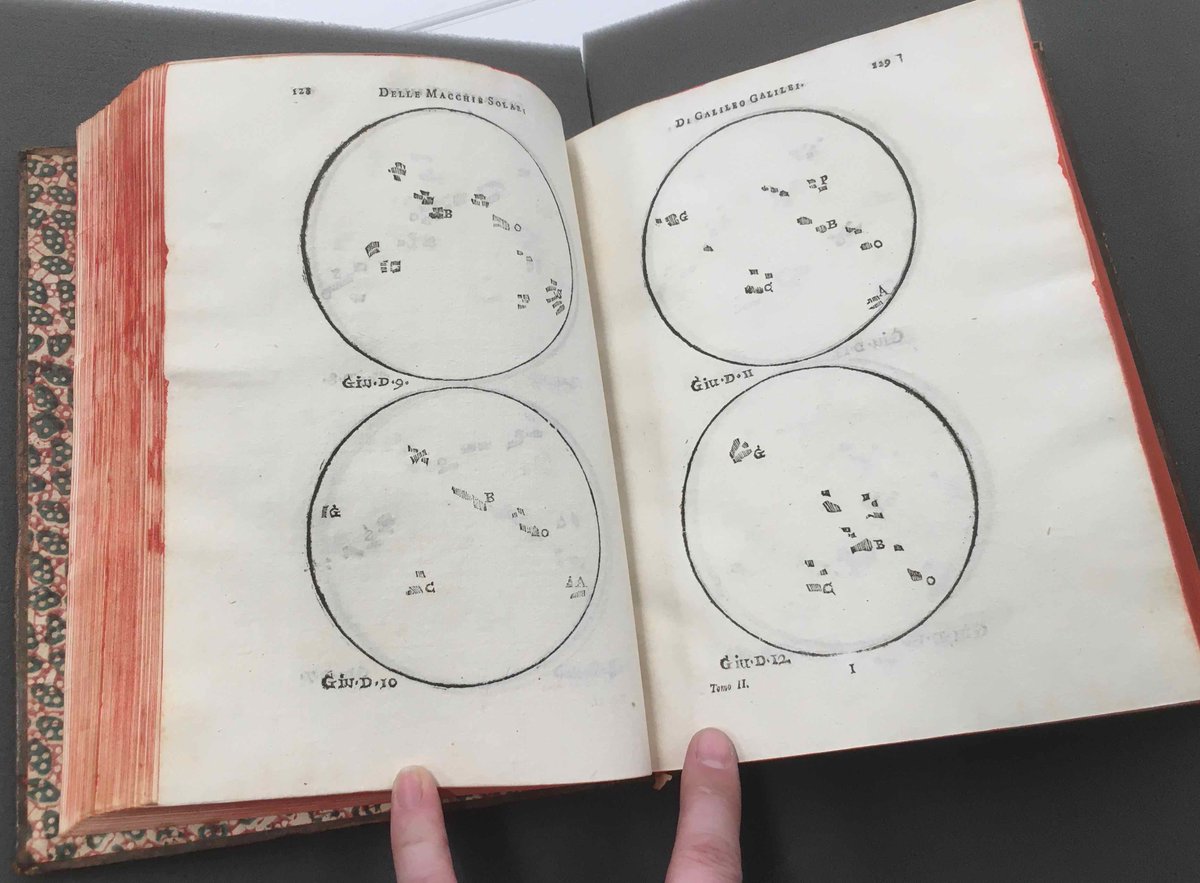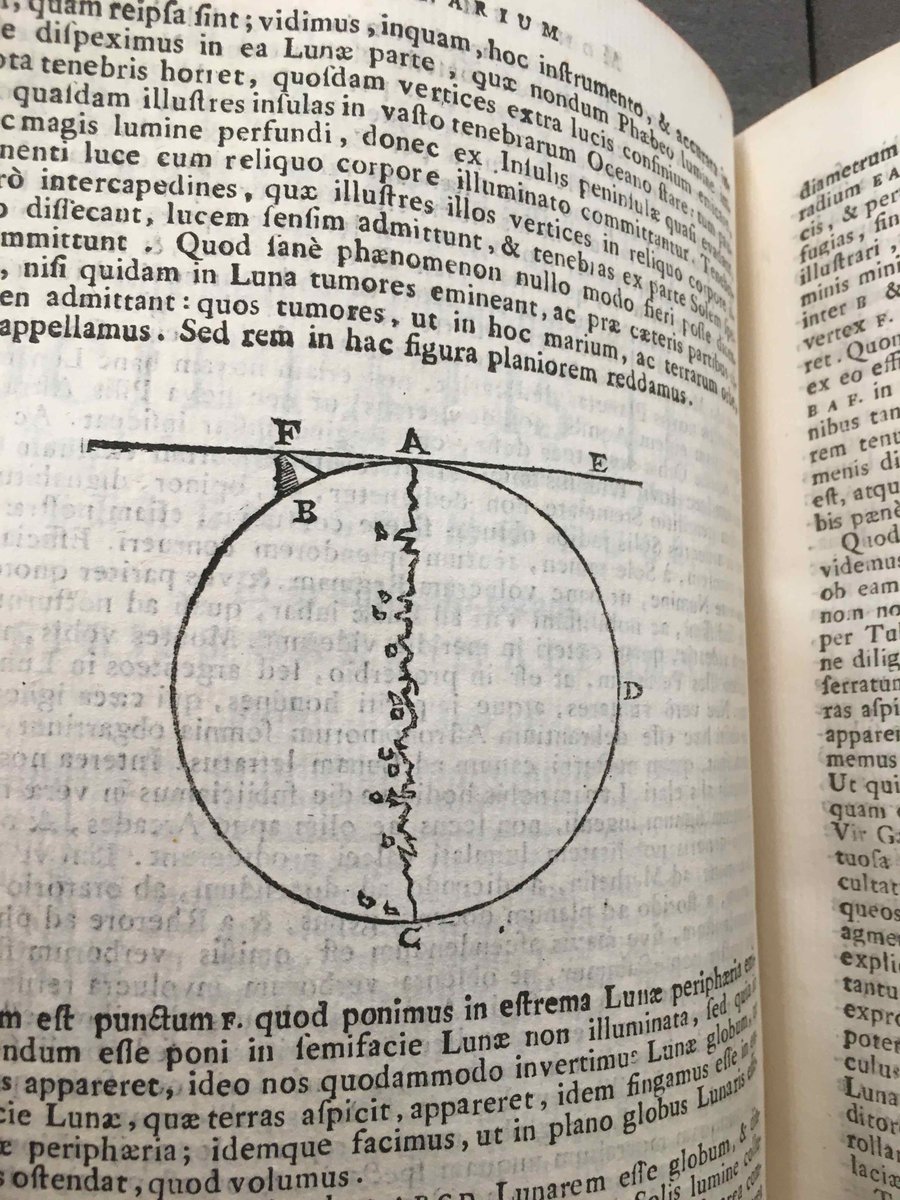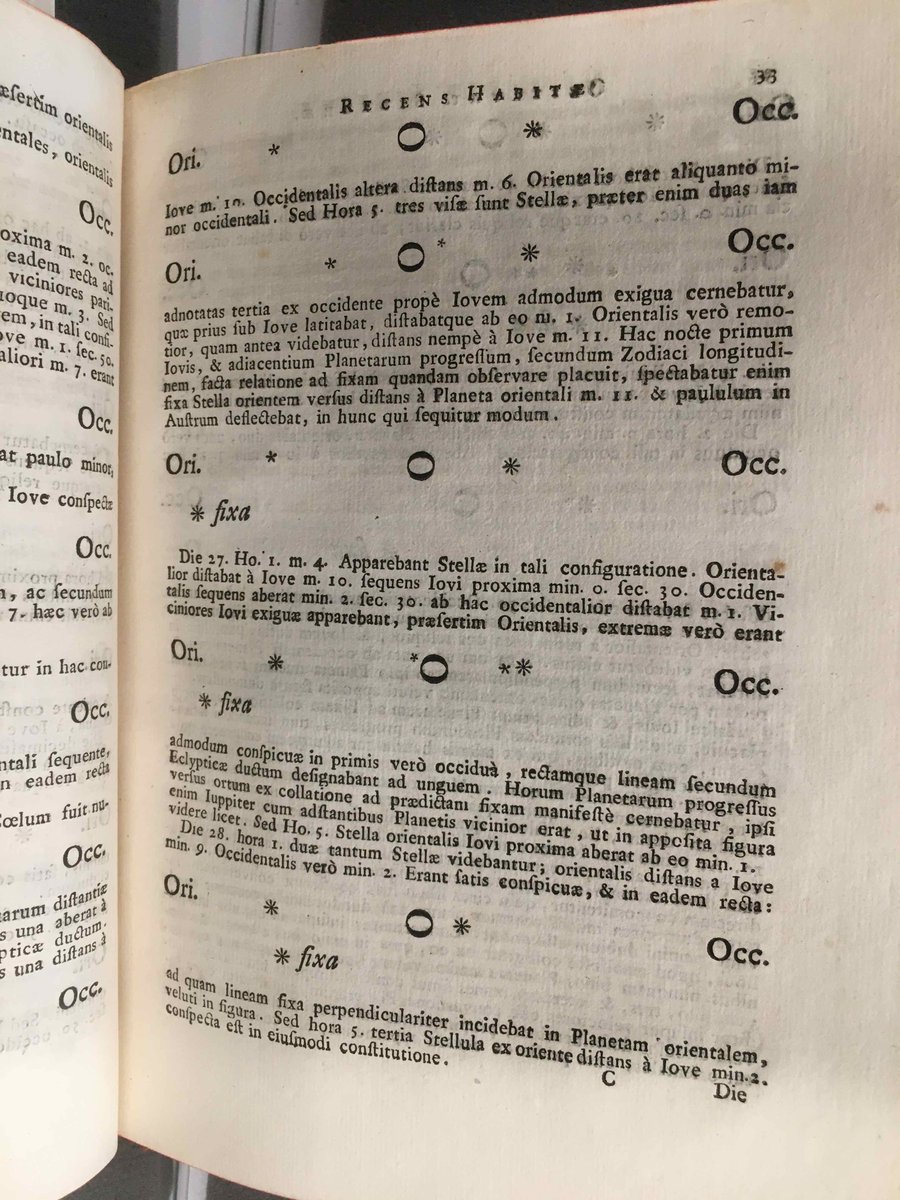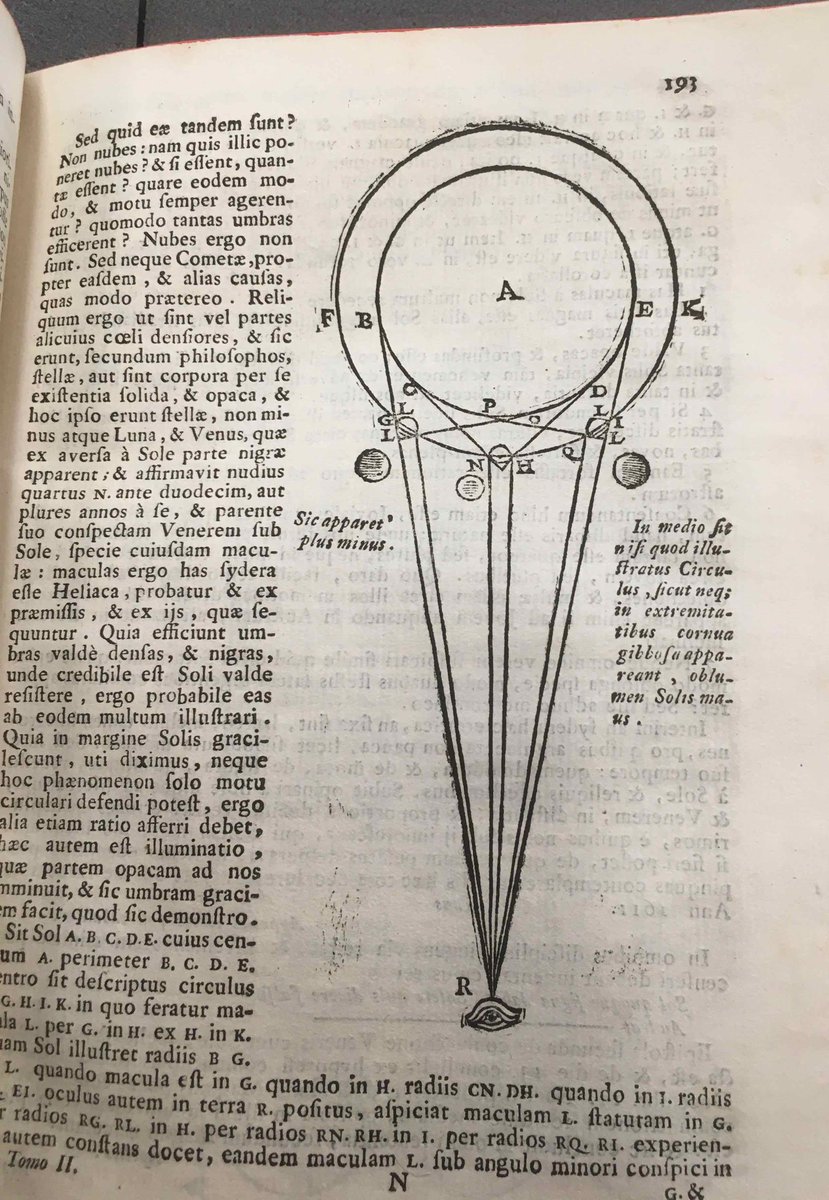About a million years ago (21st Feb) I took @haverfordedu Astro101 class to visit Special Collections in the @haverfordedu library to see historical astronomy related books.... here& #39;s a thread of some of the cool things we saw....
The first heliocentric model as published by Nicolas Copernicus in "De Revolutionibus Orbium Coelestium" (On the Revolution of Celestial Orbs), 1543.
A geocentric model of the Universe, as published by Sacrobosco in his delightful little book Tractatus de Sphaera (On the Sphere of the World), first published 1230 (this edition 1626 - post Copernicus!).
(PS. That& #39;s my little finger - this is a really tiny book).
In Sacrobosco (1230 first publication, this edition from 1626), this neat drawing indicating one of the ways scientists could tell that the Earth was round (definitely not a #flatearth).
One last one from Sacrobosco (1626), which really had many charming diagrams - this one demonstrates how lunar eclipses work.
We looked at a collected works of Galileo, and I was able to find diagrams related to the four main findings he had which supported the heliocentric model and enraged the Catholic church - sunspots, mountains on the Moon, moons of Jupiter, and phases of Venus....
Here& #39;s a series of observations of the moons of Jupiter by Galileo. They clearly orbited Jupiter, casting doubt on the geocentric Universe model.
Here& #39;s a diagram by Galileo explaining how Venus shows phases. This cannot happen if Venus orbits the Earth, and so is clear evidence of the heliocentric Universe.
That& #39;s all the photos I took: we also saw an early copy of Newton& #39;s Principia, letters from Albert Einstein, Mary Somerville, Edmund Halley, Williams Herschel, Nathaniel Bowditch and Maria Mitchell, and some materials on the history of the @haverfordedu Observatory.
It was really an awesome visit, and such an amazing resource to see first hand. I am glad we scheduled it before in person classes ended for the semester.

 Read on Twitter
Read on Twitter
